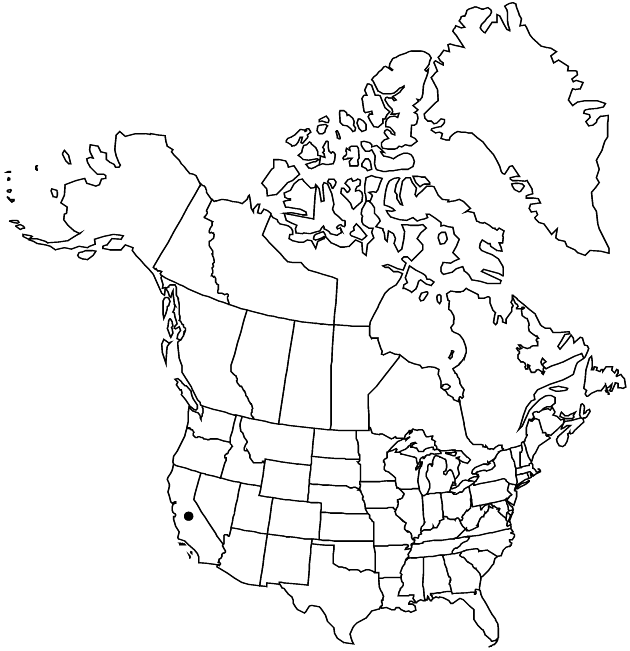Difference between revisions of "Layia fremontii"
Mem. Amer. Acad. Arts, n. s. 4: 103. 1849.
FNA>Volume Importer |
imported>Volume Importer |
||
| (6 intermediate revisions by 2 users not shown) | |||
| Line 7: | Line 7: | ||
|year=1849 | |year=1849 | ||
}} | }} | ||
| − | |basionyms={{Treatment/ID/ | + | |special_status={{Treatment/ID/Special_status |
| + | |code=E | ||
| + | |label=Endemic | ||
| + | }} | ||
| + | |basionyms={{Treatment/ID/Basionym | ||
|name=Calliachyris fremontii | |name=Calliachyris fremontii | ||
|authority=Torrey & A. Gray | |authority=Torrey & A. Gray | ||
| + | |rank=species | ||
| + | |publication_title=Boston J. Nat. Hist. | ||
| + | |publication_place=5: 110. 1845 | ||
}} | }} | ||
|synonyms= | |synonyms= | ||
| Line 26: | Line 33: | ||
|elevation=10–800 m | |elevation=10–800 m | ||
|distribution=Calif. | |distribution=Calif. | ||
| − | |discussion=<p>Layia fremontii occurs in the Great Valley and adjacent foothills of the Cascade Range and Sierra Nevada.</p> | + | |discussion=<p><i>Layia fremontii</i> occurs in the Great Valley and adjacent foothills of the Cascade Range and Sierra <i>Nevada</i>.</p> |
|tables= | |tables= | ||
|references= | |references= | ||
| Line 35: | Line 42: | ||
-->{{#Taxon: | -->{{#Taxon: | ||
name=Layia fremontii | name=Layia fremontii | ||
| − | |||
|authority=(Torrey & A. Gray) A. Gray | |authority=(Torrey & A. Gray) A. Gray | ||
|rank=species | |rank=species | ||
| Line 49: | Line 55: | ||
|publication title=Mem. Amer. Acad. Arts, n. s. | |publication title=Mem. Amer. Acad. Arts, n. s. | ||
|publication year=1849 | |publication year=1849 | ||
| − | |special status= | + | |special status=Endemic |
| − | |source xml=https:// | + | |source xml=https://bitbucket.org/aafc-mbb/fna-data-curation/src/2e0870ddd59836b60bcf96646a41e87ea5a5943a/coarse_grained_fna_xml/V19-20-21/V21_647.xml |
|tribe=Asteraceae tribe Heliantheae | |tribe=Asteraceae tribe Heliantheae | ||
|subtribe=Asteraceae (tribe Heliantheae) subtribe Madiinae | |subtribe=Asteraceae (tribe Heliantheae) subtribe Madiinae | ||
Latest revision as of 20:13, 5 November 2020
Plants 8–40 cm (self-incompatible); not glandular, not strongly scented. Stems not purple-streaked. Leaf blades lanceolate or oblanceolate to linear, 6–70(–90) mm, margins (basal leaves) lobed (pinnatifid). Involucres hemispheric to depressed-hemispheric, 4–11 × 3–11+ mm. Phyllaries 3–15, apices often longer (sometimes shorter) than folded bases. Paleae subtending ± all disc florets. Ray florets 3–15; laminae proximally yellow, distally white or light yellow, 5–18(–23) mm. Disc florets 4–100+; corollas 3.5–4.5 mm; anthers ± dark purple. Ray cypselae glabrous. Disc pappi of 9–12 white to tawny, lance-attenuate, ± equal scales 2–5 mm, each neither plumose nor adaxially woolly. 2n = 14.
Phenology: Flowering Feb–May.
Habitat: Grasslands, meadows, open woodlands, disturbed sites, often valley bottoms, swales, edges of vernal pools, usually on heavy or shallow soils, sometimes serpentine
Elevation: 10–800 m
Discussion
Layia fremontii occurs in the Great Valley and adjacent foothills of the Cascade Range and Sierra Nevada.
Selected References
None.
